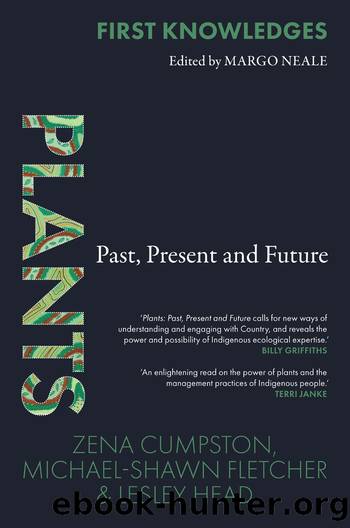Plants: Past, Present and Future by Zena Cumpston

Author:Zena Cumpston
Language: eng
Format: epub
ISBN: 9781760761882
Publisher: Thames & Hudson Australia Pty Ltd
In the literature on phyto-remediation, or plants as environmental healers, Typha is considered a botanical canary in the coalmine for its capacity as an indicator species of pollution.21 It is used in Australian constructed wetlands to help remove effluent from natural waterways. Nitrogen, phosphorus, potassium, calcium, magnesium and sodium get drawn up into the leaves. One trade-off here is that dense Typha wetlands can create extensive mosquito habitat, especially in the tropics. It can also absorb and accumulate heavy metals such as aluminium, iron, zinc and lead.22 Its ânaturally colonisingâ character renders it a suitable candidate to immobilise copper, magnesium and zinc in the tailings dams of a gold and copper mine near Orange, New South Wales. It has a dual role, reducing flow rates and allowing metals to precipitate onto the sediment, and then taking up the leachate, which is precipitated out as an iron and magnesium plaque on its roots.23
In Germany, Typha has been tested extensively as a building material in the renovation of heritage buildings.24 The structure of its leaf mass provides a combination of insulation and strength via fibre-reinforced supporting tissue filled with soft open-cell spongy tissue. This can be manufactured into a magnesite-bound Typha board with high strength and dynamic stability, and low thermal conductivity. These tests draw attention to the potential industrial scale of its enormous growth rate and yield; an annual production rate of 15â20 tonnes of dry matter per hectare (four to five times that of evergreen forest production). We can imagine the moors and valleys of Germany covered with Typha farms, fulfilling the countryâs total demand for insulation and wall construction. The scale of landscape transformation that this companion might require is considerable, however. Similarly, in Senegal, crushed Typha fibres have been mixed with clay to provide a well-insulated building material that will reduce energy consumption and carbon dioxide emissions in the building sector.25
Download
This site does not store any files on its server. We only index and link to content provided by other sites. Please contact the content providers to delete copyright contents if any and email us, we'll remove relevant links or contents immediately.
| Cacti & Succulents | Flowers |
| Mushrooms | Trees |
Sapiens: A Brief History of Humankind by Yuval Noah Harari(14320)
The Tidewater Tales by John Barth(12626)
Mastermind: How to Think Like Sherlock Holmes by Maria Konnikova(7278)
Do No Harm Stories of Life, Death and Brain Surgery by Henry Marsh(6905)
The Thirst by Nesbo Jo(6879)
Why We Sleep: Unlocking the Power of Sleep and Dreams by Matthew Walker(6656)
Life 3.0: Being Human in the Age of Artificial Intelligence by Tegmark Max(5516)
Sapiens by Yuval Noah Harari(5323)
The Longevity Diet by Valter Longo(5042)
The Body: A Guide for Occupants by Bill Bryson(5029)
The Rules Do Not Apply by Ariel Levy(4910)
The Immortal Life of Henrietta Lacks by Rebecca Skloot(4550)
Animal Frequency by Melissa Alvarez(4428)
Why We Sleep by Matthew Walker(4394)
The Hacking of the American Mind by Robert H. Lustig(4339)
Yoga Anatomy by Kaminoff Leslie(4333)
All Creatures Great and Small by James Herriot(4271)
Double Down (Diary of a Wimpy Kid Book 11) by Jeff Kinney(4241)
Embedded Programming with Modern C++ Cookbook by Igor Viarheichyk(4141)
